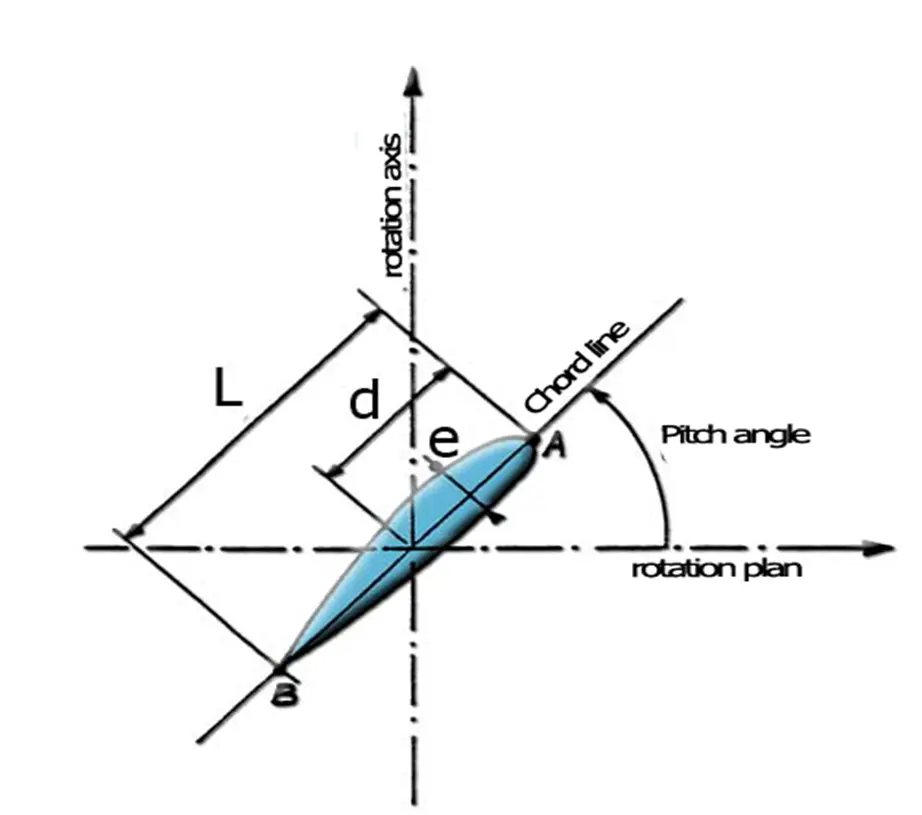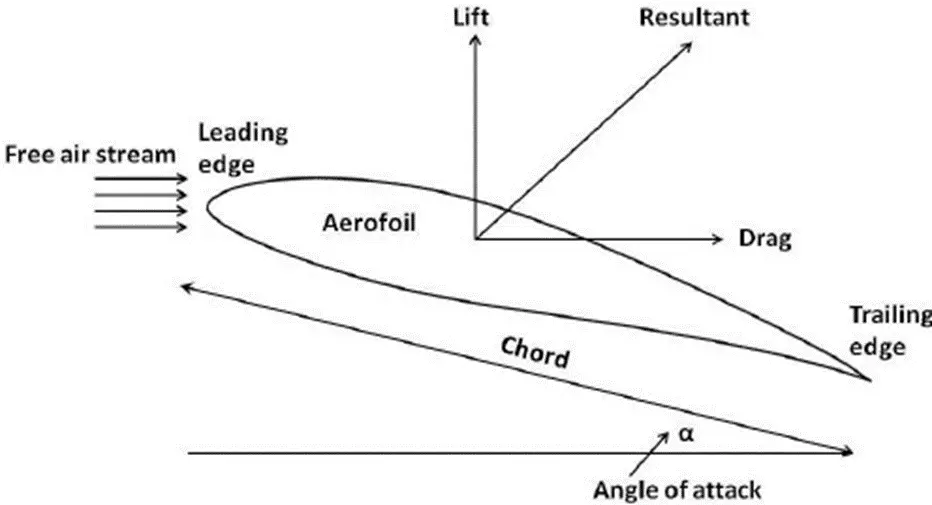Have you ever wondered why some ceiling fans are better at keeping you cool?
It all comes down to the blade pitch—the angle at which the fan blades are tilted. That pitch seriously affects how much air your fan can circulate in the room.
As the saying goes, “The steeper the pitch, the stronger the breeze.” So, if you want a fan that can keep you as cool as a cucumber, the blade pitch matters.
However, it’s crucial to find the right balance between pitch and efficiency, as an overly steep pitch can make the fan less efficient and noisy. So here we came to help you with a complete guide on fan blade pitch length and more about it!
Why Blade Pitch Is Important?
While you may believe that a ceiling fan consists of mere blades twirling around, science is at play here.
The blade pitch denotes the angle at which the blades are set concerning the motor.

Although it may not seem significant, the blade pitch has a massive impact on your fan’s air movement.
Here’s the deal: if the blade pitch is steeper, your fan will move more air. This is due to the heightened angle that creates more resistance, leading to a greater downward push of air as the blade slices through.
Conversely, a shallower blade pitch will result in less airflow since less resistance is created.
However, steeper blade pitches may increase air movement, but they might also produce more noise and lower efficiency.
Your fan will require more energy to move all that extra air, resulting in higher bills and a noisier atmosphere. So, it’s absolutely good to keep a balance between efficiency and effectiveness when deciding to buy a fan for your home.
Now, what’s the perfect pitch range?
It is 12–15 degrees.
This equilibrium guarantees the right amount of airflow without compromising efficiency or producing too much noise. I would therefore suggest choosing blades that fall within this range when hunting for a new fan.
Fact!
The angle of a fan blade is called its pitch! And guess what? The pitch affects how much air your fan can move. Manufacturers usually tilt blades 5-10 degrees for regular fans and 30-55 degrees for fancier ones. Don’t go overboard with pitches over 55 degrees, though, they can restrict airflow and harm performance. So keep an eye on that pitch!
As the blades rotate, they generate a current of air known as a downdraft. This current moves around the room, producing a cooling sensation. Besides, the downdraft may also disperse warm air during the winter, ensuring that your home remains comfortable throughout the year.

So next time you’re shopping for a fan, remember the ideal blade pitch range and reap the benefits of better airflow in your home.
What Is The Optimal Blade Pitch for Effective Air Circulation?
Now let’s talk about how to keep cool with your ceiling fan. To make sure it’s doing the job right, you’ve got to get that blade pitch angle just right – aim for 12 to 15 degrees.
This angle gives the blades enough power to push through the air and create a refreshing breeze without blowing your hat off.
Think of it like finding the perfect spot on a guitar string – get it just right and everything sounds awesome. So no need to worry, just adjust that pitch and relax. You’ll feel fantastic in no time, trust us!
What’s the best blade pitch for different climates and seasons?
How To Adjust The Blade Pitch on Ceiling Fans?
Following are the 7 steps to properly adjust the blade pitch:
- Prioritize Safety – disconnect the fan from the power source.
- Locate the Adjustment Mechanism – screws, bolts, or clips connecting blades to the fan.
- Gather The Tools – Phillips head screwdriver or Allen wrench based on blade attachment.
- Choose The Blade Pitch – steep angles for strong airflow, shallow angles for energy efficiency.
- Adjust The Blade Pitch – use the tool to loosen screws/bolts, tilt cautiously for desired angle, and ensure the same pitch for balanced airflow.
- Secure The Blades – tighten screws/bolts firmly without over-tightening to avoid damage.
- Test The Fan – switch on the fan, observe smooth blade rotation without wobbling or imbalance, check airflow meets expectations, and readjust blade pitch if necessary.
Remember!
The blade pitch adjustment process may differ based on your ceiling fan’s particular model and design. Always consult your manufacturer’s instructions for customized guidance.
Common challenges and troubleshooting tips for adjusting The blade pitch
Also, see What More Problems Can Be With Ceiling Fans And Their Solutions!
Factors Influencing Blade Pitch Efficiency
How Blade Pitch impacts on energy efficiency?
The connection between blade pitch and energy efficiency can be clarified through the idea of aerodynamic efficiency.
An aerodynamically efficient fan can move a good amount of air while reducing the energy needed to spin the blades. Discovering the right combination of blade pitch, airflow, and motor effort is essential for increasing energy efficiency.
Usually, fans that have a moderate blade pitch are the best for achieving a proper balance between airflow and energy usage. These fans can create a decent breeze without putting too much strain on the motor.
Blade shape and its effect on blade pitch efficiency
Blade pitch efficiency is greatly influenced by blade shape.
Airfoil blades, with their curved design, generate lift for improved airflow and performance.
On the other hand, flat blades lack curvature and can produce less lift, leading to less efficient airflow.
Blade shape influences the interaction between the fan and the surrounding air, ultimately determining the amount of airflow produced.
Blade material and its impact on performance
Ceiling fan performance and efficiency are dependent on the blade material, particularly the blade pitch. The unique properties of each material have an impact on airflow and energy consumption.
| Blade Material | Aesthetic Appeal | Durability | Airflow Efficiency | Cost |
|---|---|---|---|---|
| Wood | Yes | Less | Low | Moderate |
| Metal | Yes | Decent | High | High |
| Plastic | No | Moderate | High | Low |
Difference In Blade Pitch Efficiency Between 3-Blade And 5-Blade Ceiling Fans
The blade count on a ceiling fan can affect its blade pitch efficiency, although the effect may not be significant.
5-Blade Fans
Modern and sleek in design, 3-blade fans have less drag and resistance due to fewer blades, allowing for effortless blade rotation. This can result in slightly greater energy efficiency compared to fans with more blades, but the difference in efficiency is usually negligible.
3-Blade Fans
Traditional and more prevalent, 5-blade fans offer smoother airflow and even distribution across the room. While the extra blades add some resistance to the motor, the impact on energy efficiency is generally minor.
How To Select the Right Blade Pitch for Ceiling Fan?
Selecting blade pitch for a ceiling fan involves various factors.
Read More: How to Measure For A Ceiling Fan? [Size Guide]
Frequently Asked Questions
No, some models have fixed blade pitches that are unchangeable.
Blade pitch can be adjusted to reverse the fan direction during winter, helping to move warm air down and improve heating efficiency.
No, while it generates stronger airflow, it increases resistance and energy consumption. Finding the right balance is essential for optimal airflow and energy efficiency.
It depends on the ceiling fan model. Some fans have fixed pitches, while others have adjustable mechanisms. Check the manufacturer’s instructions or seek professional advice if in doubt.
Conclusion
In summary, blade pitch is vital in determining a ceiling fan’s efficiency and performance.
It affects airflow, energy consumption, and whether it’s suitable for different rooms and seasons. I will suggest choosing the right blade pitch by considering room size, desired airflow, energy efficiency, and the manufacturer’s recommendations.
Also, finding the right balance guarantees optimal performance and comfort in your space.

